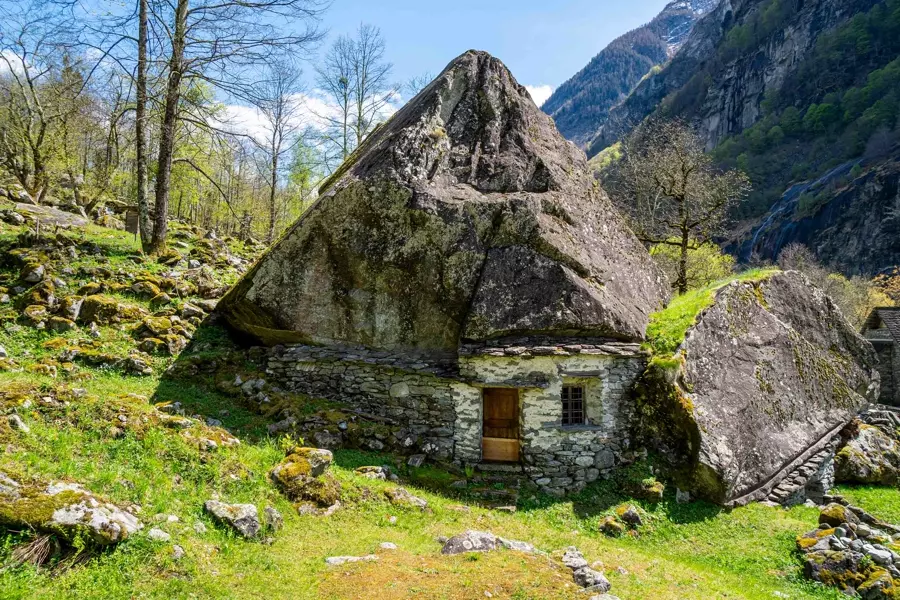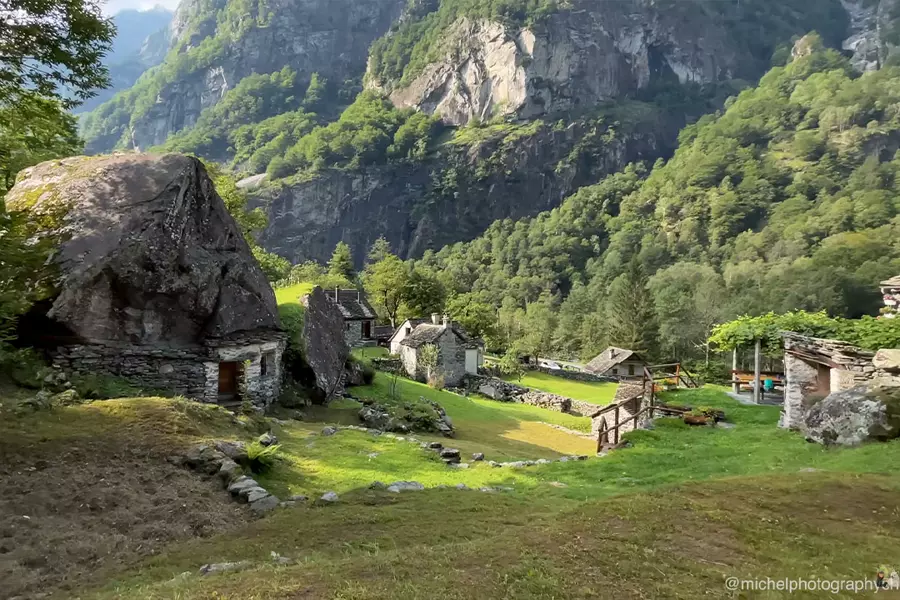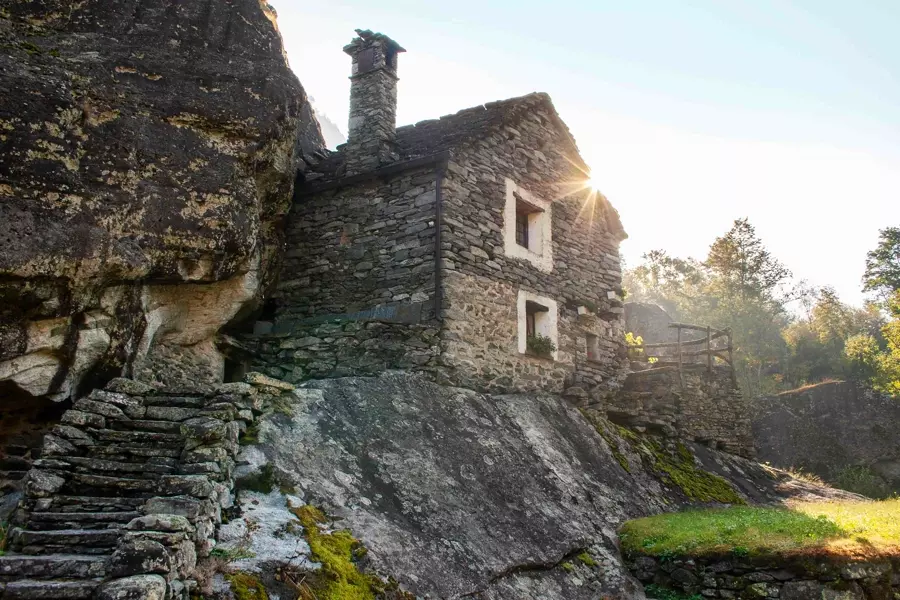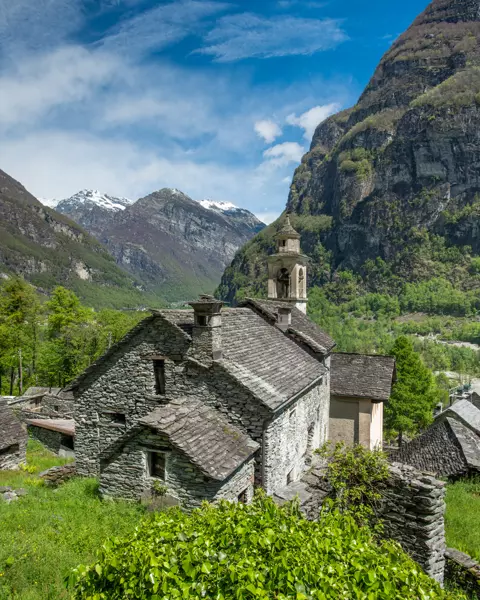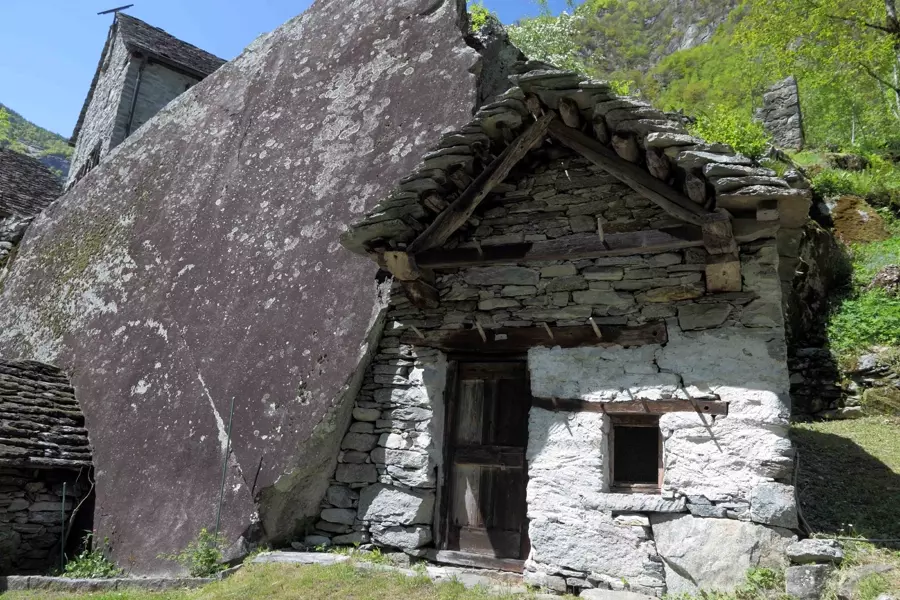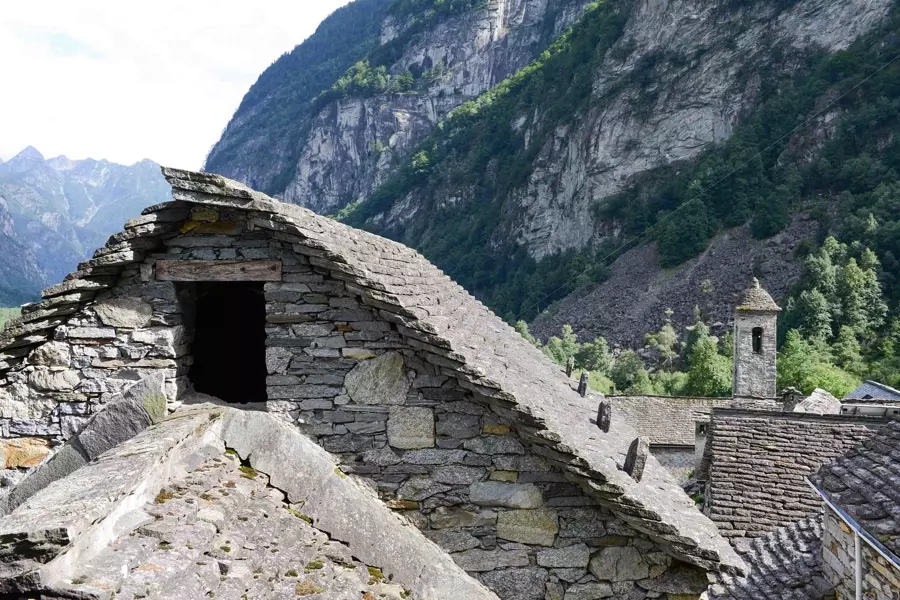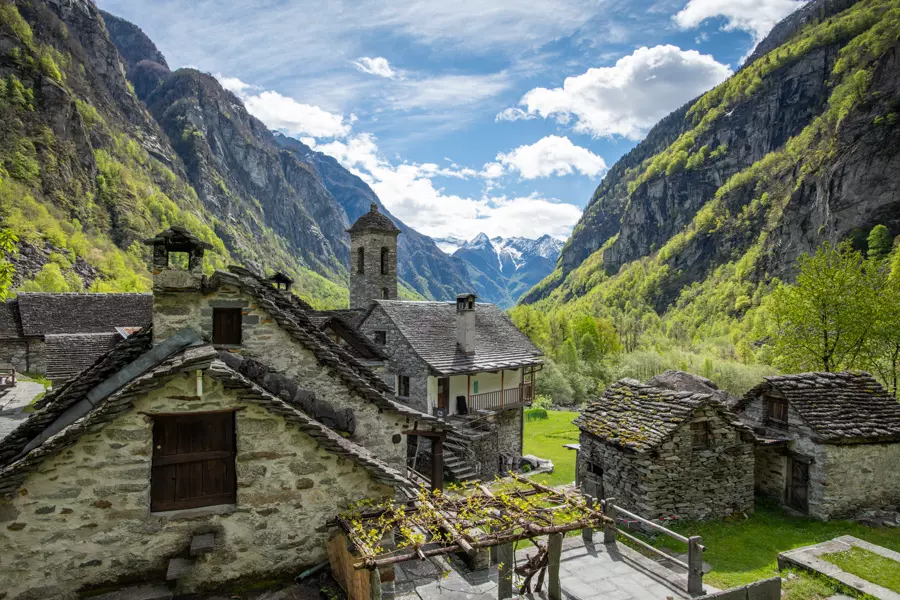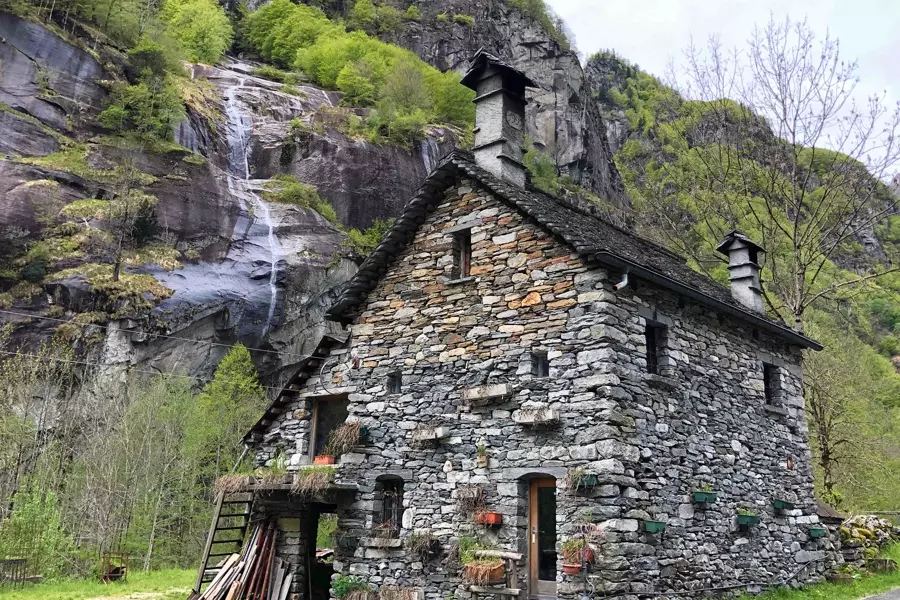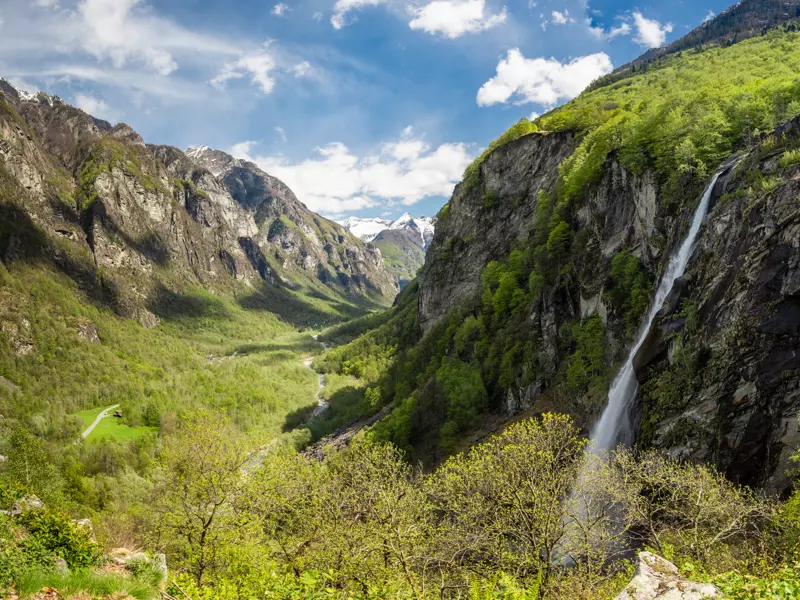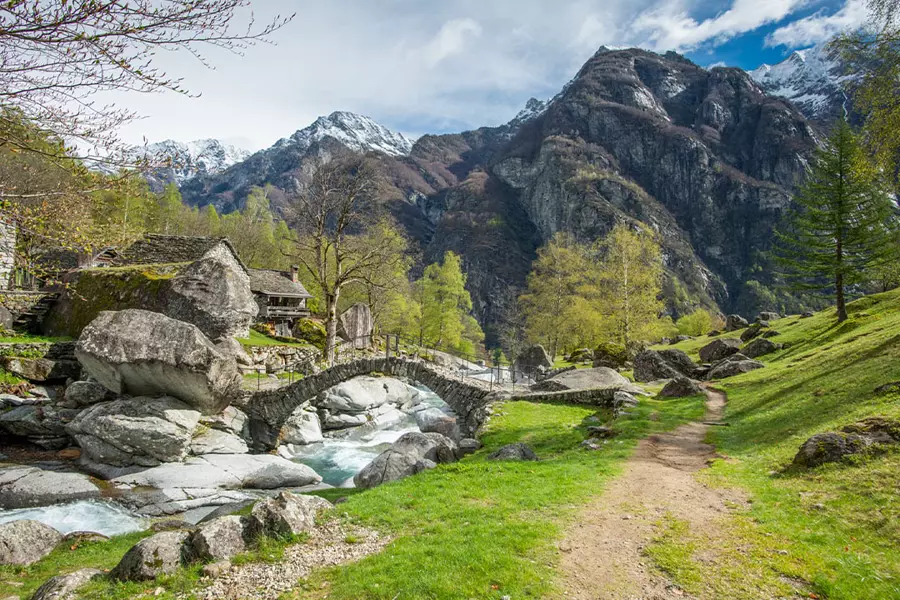Nestled within the Italian-speaking region of the southern Swiss Alps is a series of lost homes that have managed to remain off the grid for centuries. These homes, known as splüi by locals, are located in the Bavona Valley and bear a striking resemblance to hobbit dwellings or fairytale towns. The rocky terrain presents unique challenges for the inhabitants, but it also provides an opportunity to embrace a simpler way of life.
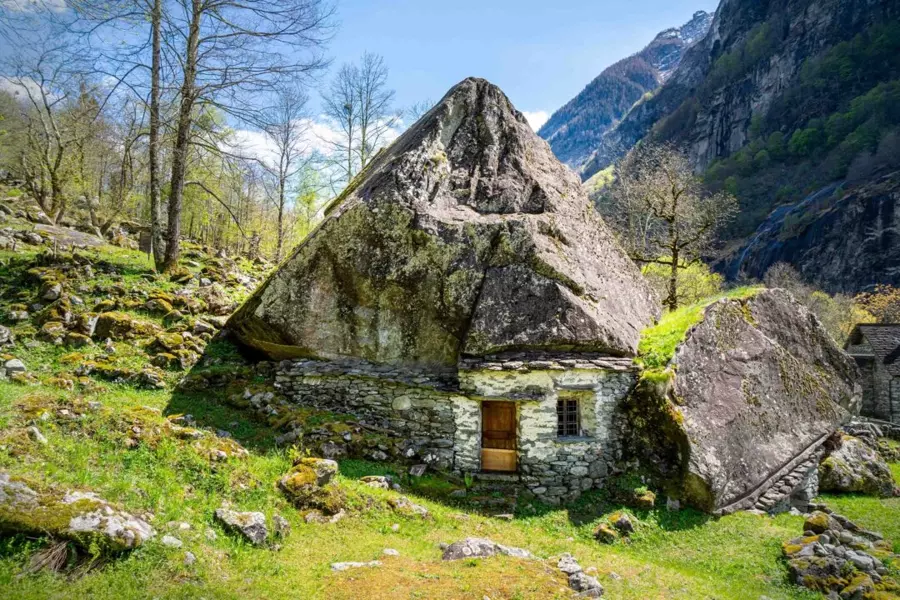
The rugged landscape is punctuated by cave-like abodes that lie beneath and in between enormous stones. These homes are scattered throughout the valley, with remnants of rockslides evident everywhere. The beauty of this area is truly mesmerizing, making it difficult to believe anyone would want to live here. However, there are those who have chosen to make their home in this remote and seemingly unforgiving terrain.
A historian and medievalist named Mr. Zappa has extensively researched these distinctive rock homes throughout the valley. Despite the harsh conditions, the people of Bavona Valley continue to live here by choice, particularly during summer months. The absence of electricity is not seen as a disadvantage; instead, they have grown accustomed to using wood for warmth and candles when darkness falls.
In the past, residents of hamlets such as Foroglio and Sonlerto would remain year-round in Bavona Valley. However, most now spend winters down the pass in towns like Cavergno and Bignasco, where there are more comforts and amenities. In summer, they return to Bavona Valley to graze their livestock in the cooler, higher pastures, practicing transhumance—a longstanding tradition of moving animals between lowland pastures in winter and highland pastures in summer.
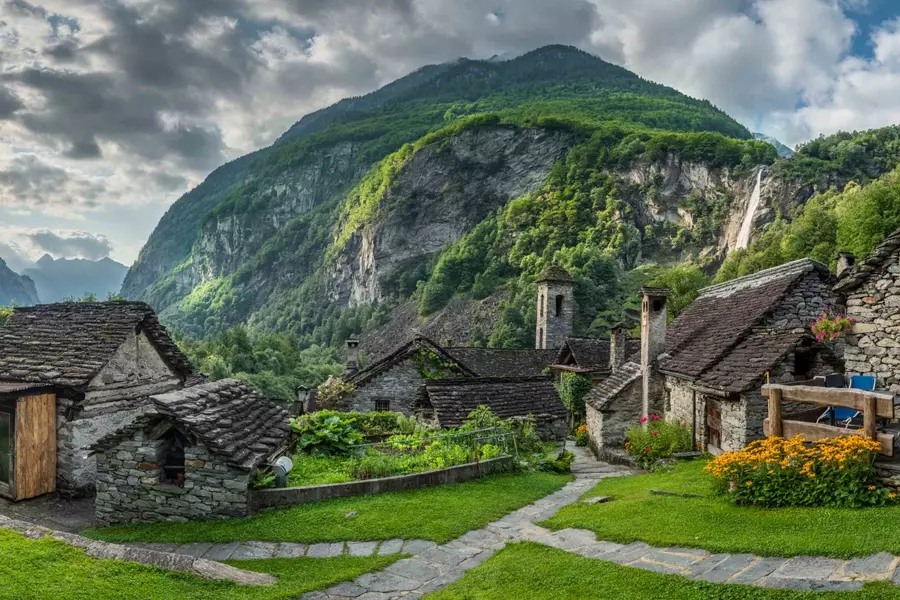
Evidence suggests that settlements in Bavona Valley have existed for at least 5,000 years. A Roman necropolis found to the south indicates that ancient Europeans visited as early as the first century B.C. The region’s history is rooted in a pastoral economy with herds of goats providing hard cheese and modest farming practices. Terraced gardens were dug into cliffsides, some at dizzying heights, to grow food, while soil-covered rocks allowed for small kitchen gardens.
However, the Little Ice Age around 1500 A.D. began to disrupt this way of life. Winters became longer and summers wetter, with rain causing hundreds of waterfalls to overflow rivers, washing away already scarce farmland. As a result, the people of Bavona Valley lost hope and left in large numbers, only returning during summer months to maintain their rustic lifestyle.
Even when hydroelectric power arrived in the valley in 1955, most residents chose to remain off-grid. Today, visitors can hike through Bavona Valley or stay in accommodations in nearby towns such as Bignasco. The region is known for its delicious cheese gnocchi in butter sage sauce, which can be enjoyed while taking in the stunning panorama from San Carlo’s cable cars.

For those who call Bavona Valley home, their lives are uncomplicated by modern conveniences like iPhone chargers and microwaves. They prefer to embrace a more simple existence, making do with what they have and finding contentment in their unique off-grid lifestyle.
